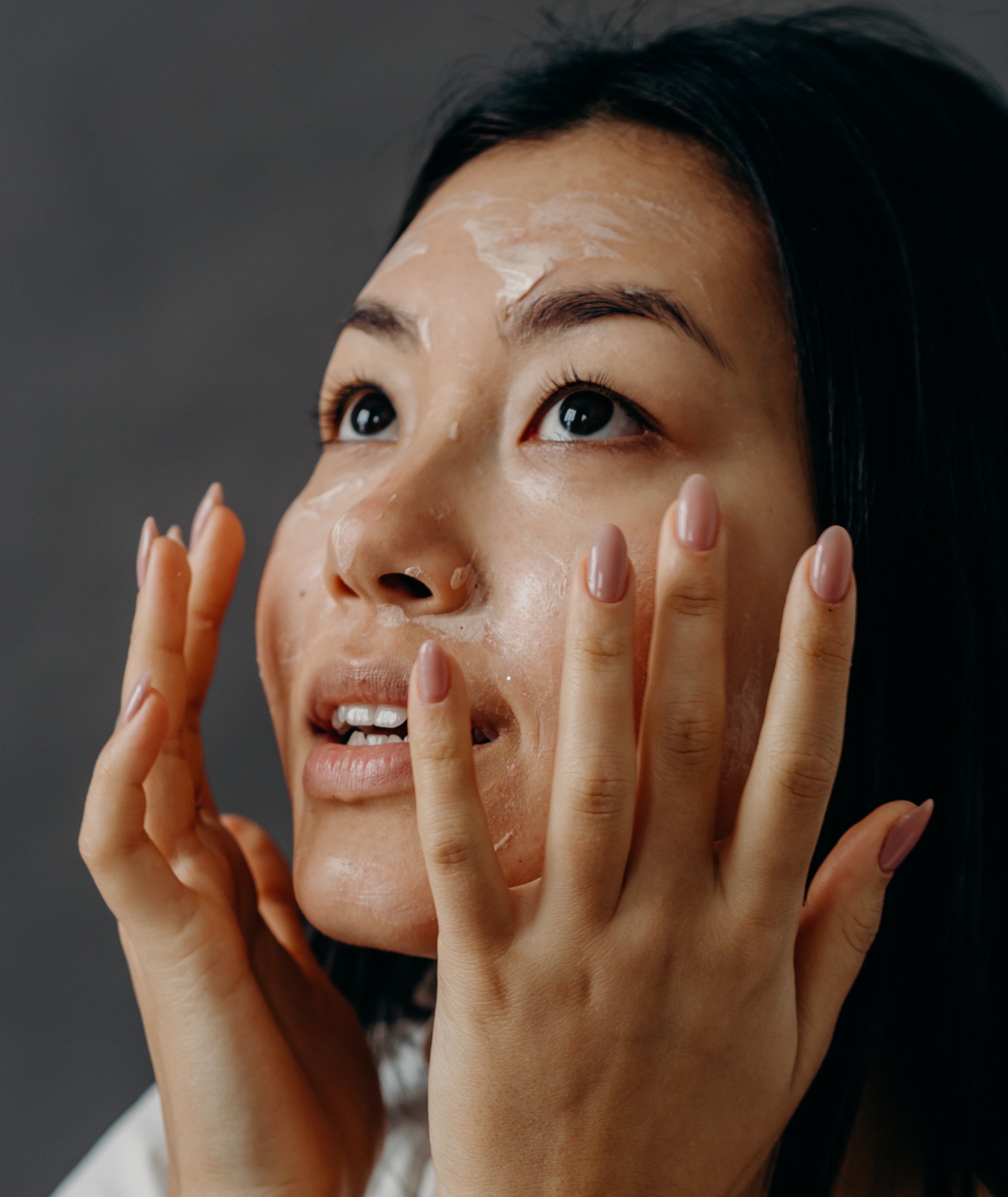Just like cleansing and moisturizing, exfoliation is an essential step in any skincare routine. The process of sloughing off dead skin cells, using either manual, chemical or physical exfoliation, stimulates blood flow, promotes collagen production, and kick-starts the cell turnover cycle, which combined can help to brighten and improve both skin tone and texture.
But many of us are either not exfoliating at all, exfoliating incorrectly, or over-exfoliating, which can disrupt the skin barrier, leading to redness, dryness, and irritation. "Overly exfoliated skin atrophies like parchment paper and can become thin and ashen,” says board certified dermatologist Dr. Macrene Alexiades, founder of Macrene Actives. The use of harsh physical exfoliants made with grains from pits, seeds, or kernels meanwhile can have jagged surfaces that cause micro-tears in the skin.
So what is the right way to exfoliate for every skin type? Read on for our comprehensive guide to facial exfoliation for radiant, healthy skin.
What is skin cell turnover?
Cell turnover is the continuous process of shedding dead skin cells and subsequently replacing them with younger cells. “Your skin cells should turn over every 28 days,” says Dr. Macrene. “But this process can be hampered by a number of factors such as hormone fluctuations, sebum production, sun exposure, vitamin deficiencies, or aging. That is why many of us need exfoliation from time to time.”
As skin cell turnover slows down, the skin also produces less collagen and elastin, pores can become clogged, creating a breeding ground for acne and bacteria, and as dead skin cells sit on the surface of our skin they can create a dull, uneven, and flaky appearance and prevent our skincare products from being effectively absorbed.
What are the benefits of exfoliation?
The skincare benefits of exfoliation, if done correctly, are multiple. Through the act of exfoliation, we remove old skin cells from the topmost layer of the skin, which in turn triggers stem cells in the basal layer to begin making new skin cells and stimulates collagen production. This can reveal healthier, fresher, brighter looking skin over time as our skin cell turnover cycle gets back on track.
Additionally, this clean canvas can better absorb and receive the benefits of both active and moisturizing ingredients so our skincare products can work more effectively.
What are the different types of exfoliation?
There are several different ways to exfoliate. Firstly, you can exfoliate manually using your hands or a clean, cotton cleansing cloth to gently slough off dead skin cells and stimulate blood flow to the face, neck, and décolleté.
When it comes to skincare products, exfoliators fall into two categories: physical and chemical. Physical exfoliants are washes or scrubs formulated with powders, fine crystals, or biodegradable beads that scrub the dead skin cells off the surface of the skin through an abrasive action. Chemical exfoliants use ingredients such as fruit enzymes and acids like Alpha-Hydroxy and Beta-Hydroxy Acids to loosen and break down the bonds that hold dead skin cells together so they can be sloughed off. Always start with lower concentrations of these actives, as they can cause redness and irritation, then work your way up to a percentage that performs without damaging the skin.
How often should you exfoliate?
Normal skin needs to be exfoliated only one to two times a week to improve and expedite skin cell turnover. Dr. Macrene recommends more regular exfoliation for people with oily skin, large pores, and wrinkles in particular. “If you have acne or oily skin you can exfoliate a couple of times a week and do a treatment peel once a month,” says Dr. Macrene.
Exfoliation should also be done at night as part of your evening skincare routine to avoid the risk of irritation and increased photosensitivity and to allow the skin to repair itself while you sleep. Night time is also the best time to benefit from any active ingredients like Peptides, Hyaluronic Acid, Vitamin C, and Niacinamide. Apply your treatment serum after exfoliation and let these ingredients work overnight.
No matter what your skin type, always finish up with a moisturizer. Choose an oil or water based formula depending on your skin type, but never skip on hydration or you will undo all the benefits of exfoliation.
How to properly exfoliate your face
Firstly, cleanse. Cleansing and exfoliating are often conflated but are in fact two completely different skincare steps. Cleanse the skin first to remove dirt, makeup, sunscreen, and other impurities and then exfoliate.
Depending on your skin type you may choose to use a physical exfoliant, a chemical exfoliant, or both. Those with sensitive skin should opt for either manual exfoliation using their hands or a soft cloth on damp skin, or enzymes like apaya, Pumpkin and Pomegranate. These fruit enzymes are gentler than acids, yet still able to break down the keratin proteins that bond dead skin cells together.
When treating patients with dry or sensitive skin, Dr. Macrene prefers chemical exfoliators like Citric Acid in the High Performance Cleanser. “Citric acid is a relatively weak Alpha Hydroxy Acid,” says Dr. Macrene. “It does not peel the skin unless used at higher concentrations or long exposure times. The High Performance Cleanser is formulated with Citric Acid and rich vitamins and resurfaces and cleanses gently without drying out the skin.” Dry skin can also benefit from Lactic Acid, which also has humectant properties and draws moisture into the skin.
For those with oily skin, start with a physical scrub containing an exfoliant with fine, evenly shaped crystals, beads, granules, or powder. After rinsing with warm water and gently patting dry, follow up with a serum, toner, or pad containing an AHA or BHA, or even a combination of the two. If you suffer from melasma and hyperpigmentation, Dr. Macrene also recommends Glycolic Acid, which she says is successful in peeling off and lightening brown spots.
